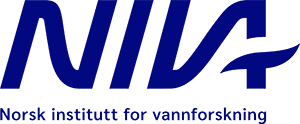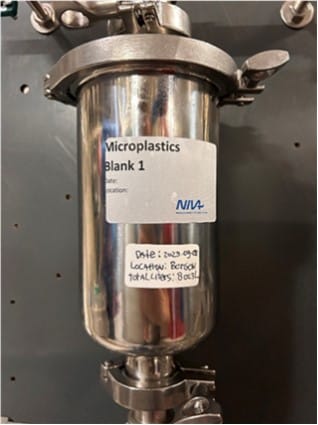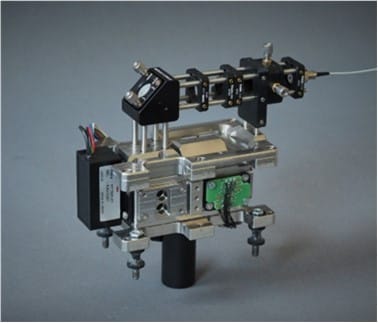MICROPLASTIC DETECTOR SYSTEM
TECHNOLOGY
cross-sectoral
microplastic pollution reduction

Monitoring and Control
Solution Scope: In-situ sensing/monitoring
Target Contaminant: Microplastics
Solution Provider or Contact Point:
NIVA Home | NIVA bert.vanbavel@niva.no
CSEM Industrial Research and Development | Technological Innovation (csem.ch) peter.cristofolini@csem.ch
Project: Nautilos
ITS Description: Microplastic detector system composed of a sampling and sensing component, mounted onboard a FerryBox. The microplastic detection system consists of an automatic microplastic sampler, a sample treatment chamber, and an inline particle measurement system. The large volume sampler uses a mesh filter (50-300 µm) to collect microplastics from 1000 L to 10 000 L. After transfer to the reaction chamber, the collected plastic particles are treated to remove organic material and stained with a fluorescent dye (Nile Red). Finally, the labelled microplastic particles are moved to the laser detector, where the fluorescence light emission from each particle is recorded. The sampler and laser detector system is designed for operation on ‘ship of opportunity’ connected to existing infrastructure (Ferrybox) where the microplastic data is acquired in combination meta data (GPS location, timestamps, weather conditions and other sensor data). The sampling component (pumping system and filter units) is well tested by the Norwegian Environment Agency in Norwegian coastal waters and by cruise ships within citizen science projects and expected to have a readiness level TRL8 by the end of the Nautilos project. The laser detector component is still in the testing phase, needs more development, as is the ferry-box housing and data acquisition system.
Correspondence with BMM OIR (sectoral priorities, R&I activities, gaps, needs): The ITS is strongly identified in the areas of activity of Monitoring & Control of microplastics. The solution responds to challenges for R&I. The new EU Directives for food, water and drinking water that require systematic monitoring of microplastics provide opportunities for developing a SME that will upscale the system.
Source of pictures: NIVA website





